Today, Apple went highly aggressive. What we should also do is discuss what Apple is doing, and how it hit on some big industry trends during its announcement. For those who have not heard, Apple announced the Apple M1 Pro and Apple M1 Max, two updates to its M1 silicon line as a midpoint in a two-year transition.
Apple Ignites the Industry with the M1 Pro and M1 Max
For the highlights, here are the big items on the Apple M1 Pro and M1 Max that show the key features. First the M1 Pro. One will notice some big feature upgrades over the Apple M1. Specifically, we get two external displays, a bigger CPU/ GPU, twice the memory, and ProRes encode/decode. We also get twice the memory bandwidth.
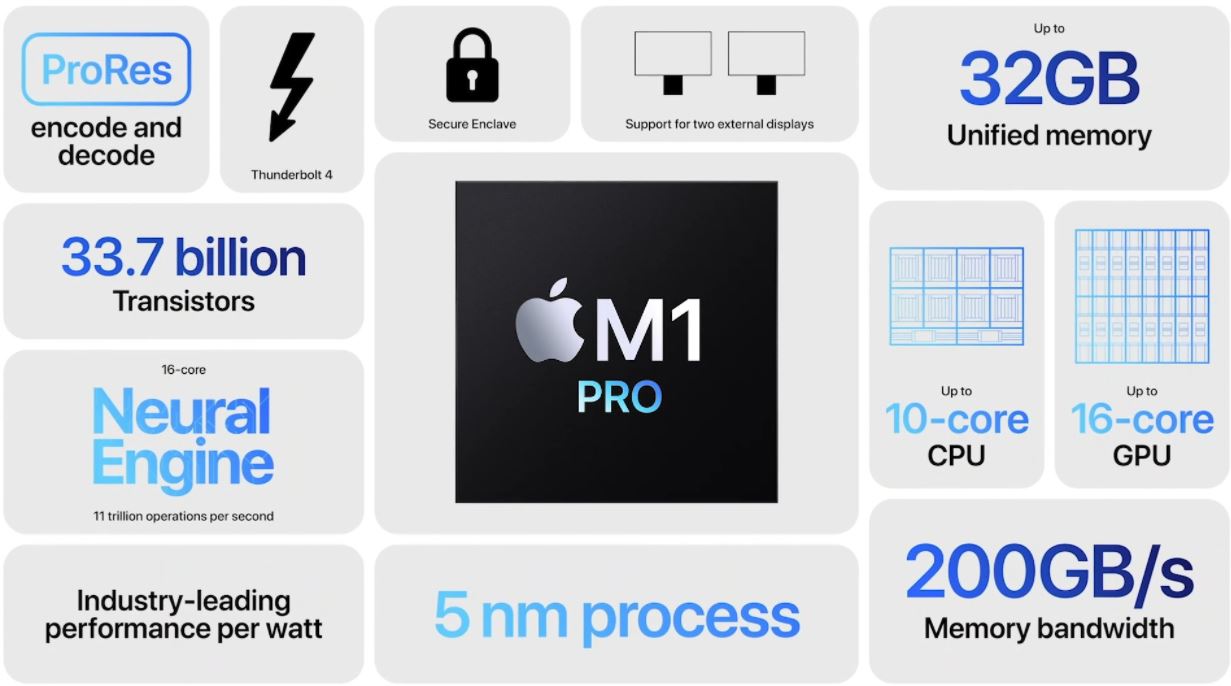
Stepping up to the Apple M1 Max, we get a similar CPU complex, but twice the memory and memory bandwidth, more display support, and more media engine performance.
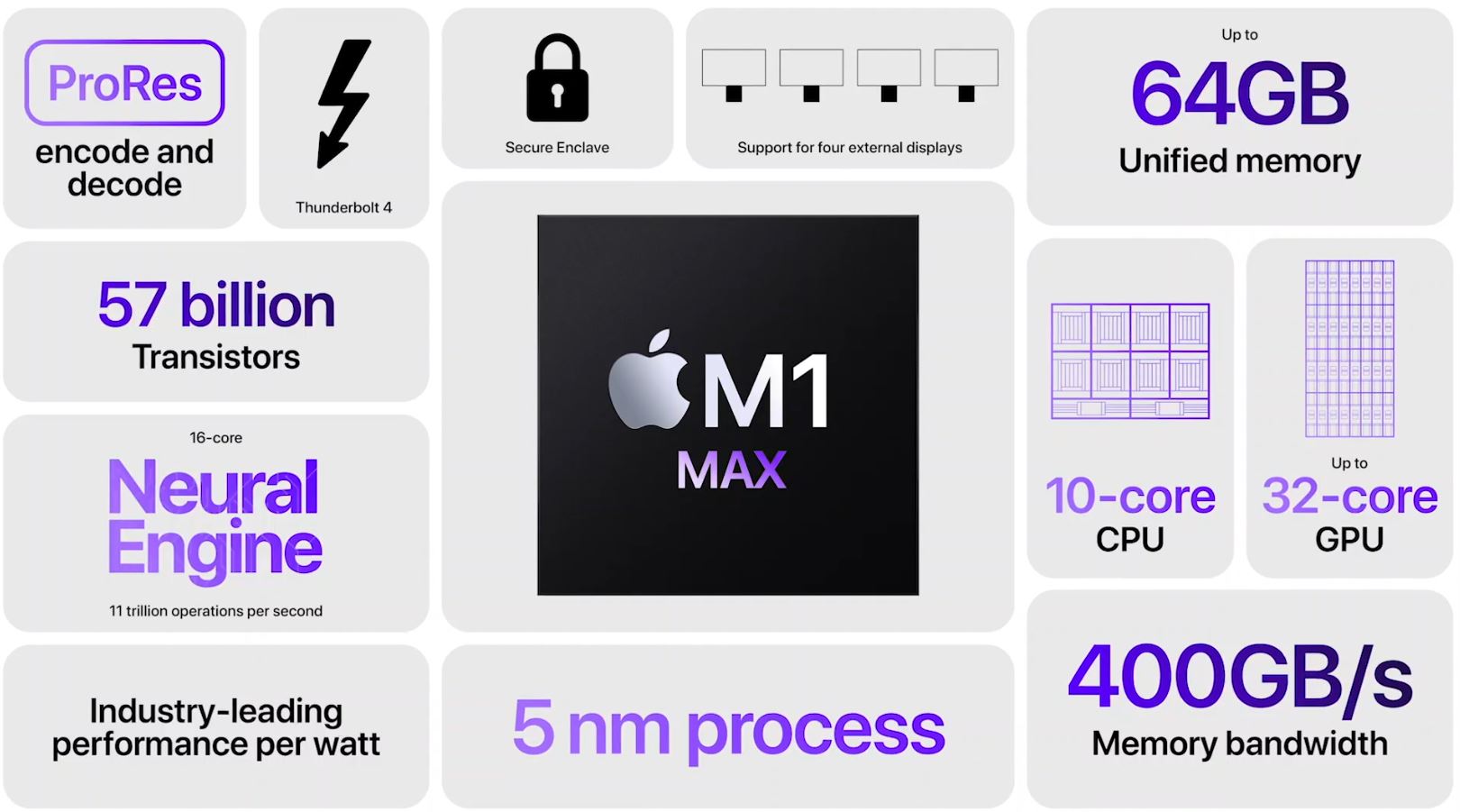
Let us get into a few of the details. First, we have a 10 core CPU that has eight high-performance cores and two efficient cores for a total of 28MB of L2 cache. We are seeing Intel also move in this direction with its Intel Golden Cove and Gracemont cores for Alder Lake. The basic realization is that offloading tasks to lower-power cores is more efficient since there is so much going on in a system and not everything needs a high-performance core.
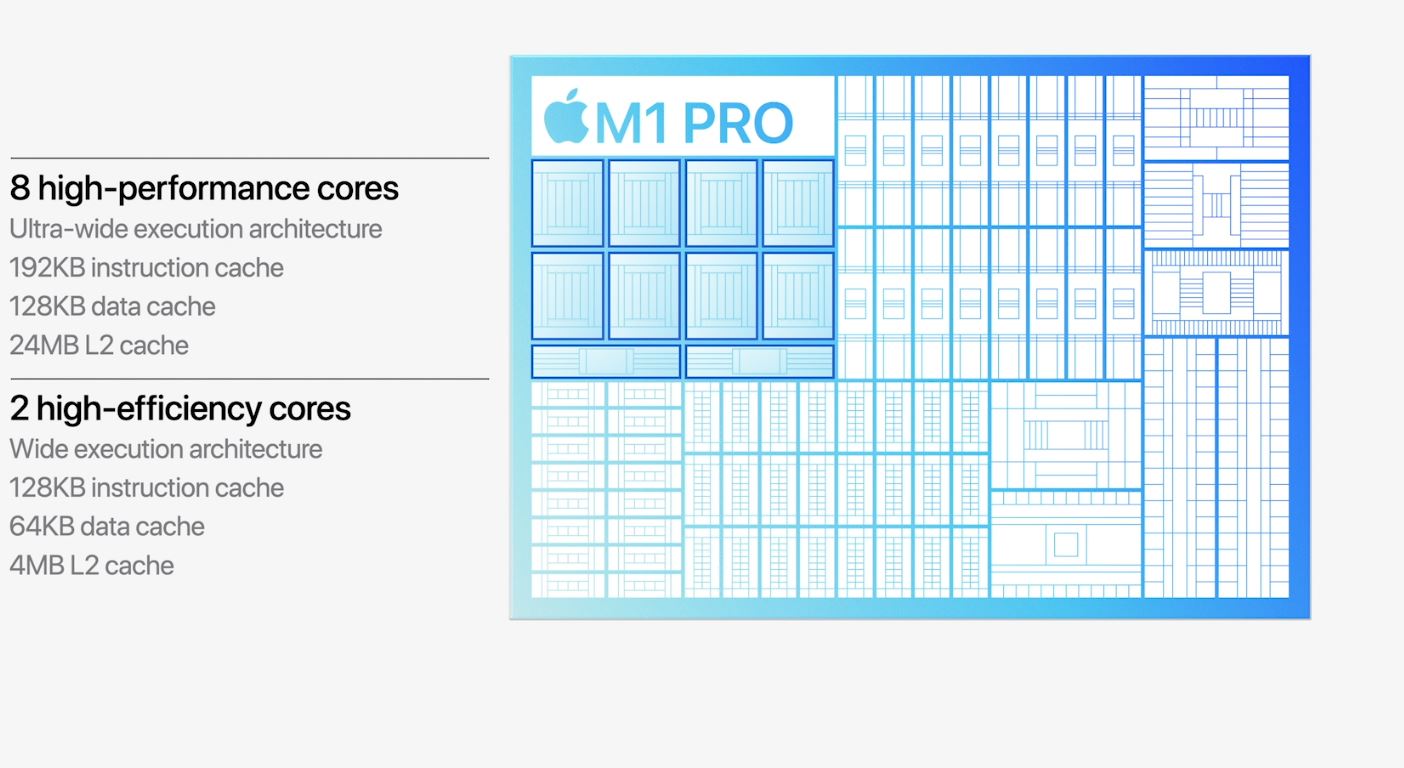
As a quick point of comparison, the original M1 chip from 2020 was four performance four efficiency cores as an 8-core part.
The GPU Apple says is a 16-core unit with up to 5.2 TFLOPS of performance, but Apple did not say at what precision on the slide. There is also a 14-core GPU option available not mentioned at the event but on the configurator. What Apple is doing, however, is that they have a unified memory architecture so when we say an M1 Pro is 32GB, that actually refers to the memory and the GPU memory all combined into one space. This is actually a big deal. Apple does not need to copy data from CPU to GPU and, in theory, can be more efficient with its use. When we talk about some of the exciting use cases for technology like CXL, one can think of this, but more robust in its use cases for servers. These are not completely analogous, but this is the industry realizing that it needs to rationalize memory footprints.
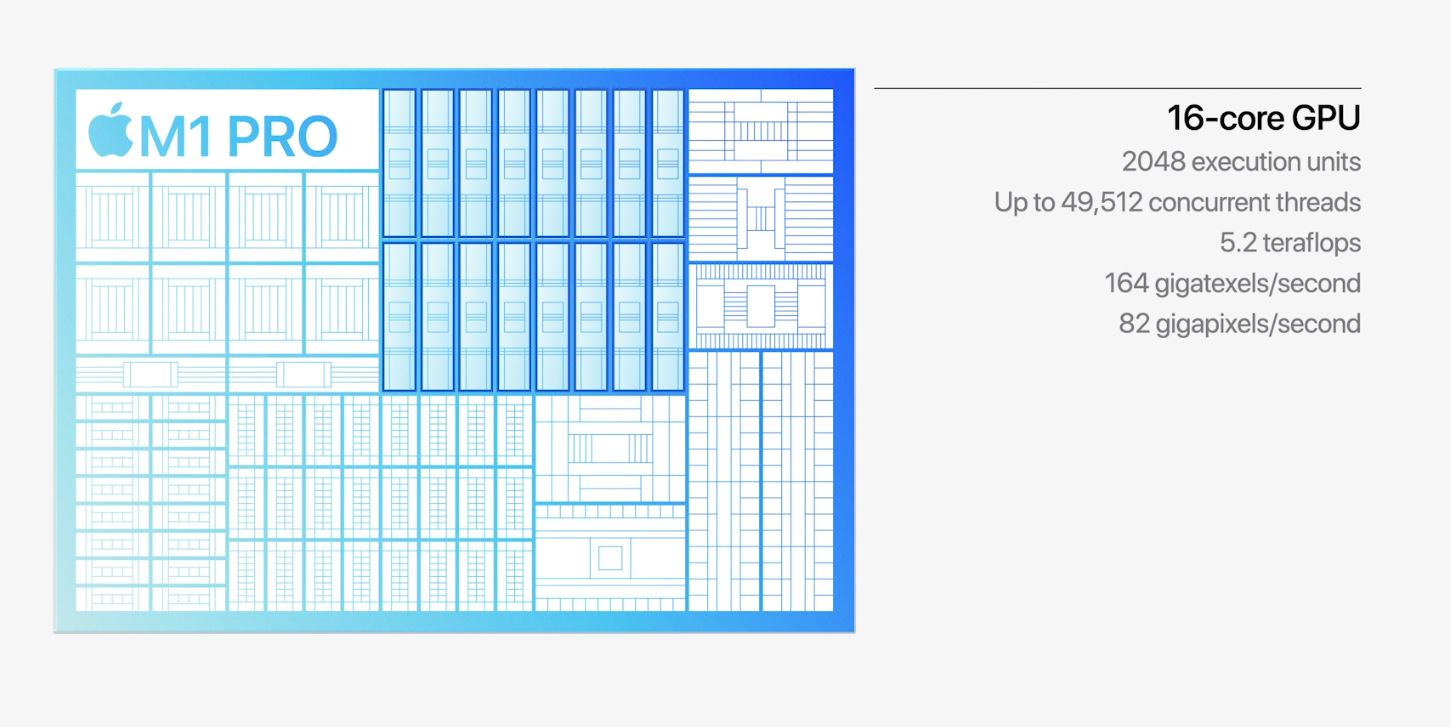
This is perhaps the magic of the solution really starts with the media engine. Apple has not just h.264/ HEVC acceleration, but also ProRes and ProRes RAW. ProRes is a high-quality codec used by many high-end cameras and video recorders. STH YouTube does not use ProRes, because of the performance challenges. Apple is able to take its codec, add acceleration, and make it useful. Let us be clear, multi-stream 8K ProRes can make even high-end workstations with GPUs like the dual NVIDIA Titan RTX we reviewed struggle. As a quick note, rendering using Adobe Premiere pro while in Phoenix Arizona for Touring the PhoenixNAP Data Center brought the Apple M1 in the 13″ MacBook Pro 16GB considerable challenge leading to a hot and absolutely screaming notebook.
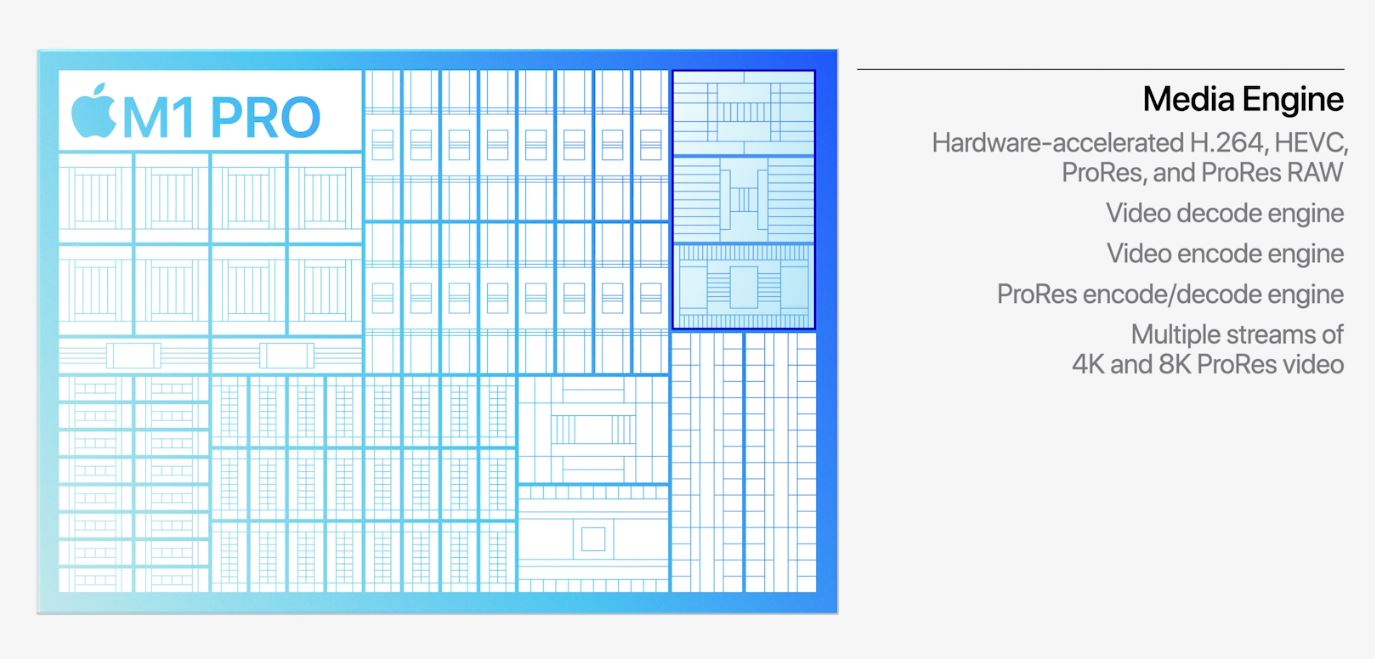
Along with its AI inference neural engine, Apple is really doing something interesting here. Instead of trying to offer features like AVX-512, it is offering point solutions to accelerate high-end workloads. Even though I do not edit STH’s videos anymore, I still scrub through them before uploading, and having ProRes acceleration will change that workflow.
The Apple M1 Pro is cool, but there is a bigger chip on here. The Apple M1 Max.
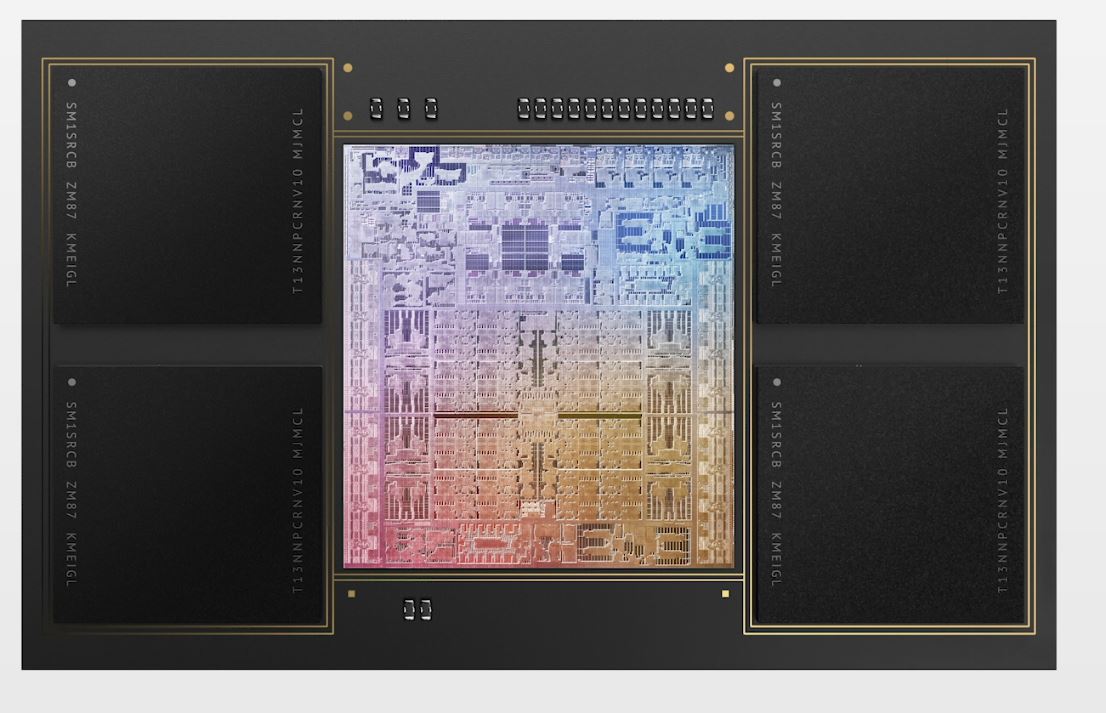
Apple doubles the number of LPDDR5 interfaces to give twice the memory capacity and bandwidth, up to 64GB and 400GB/s.
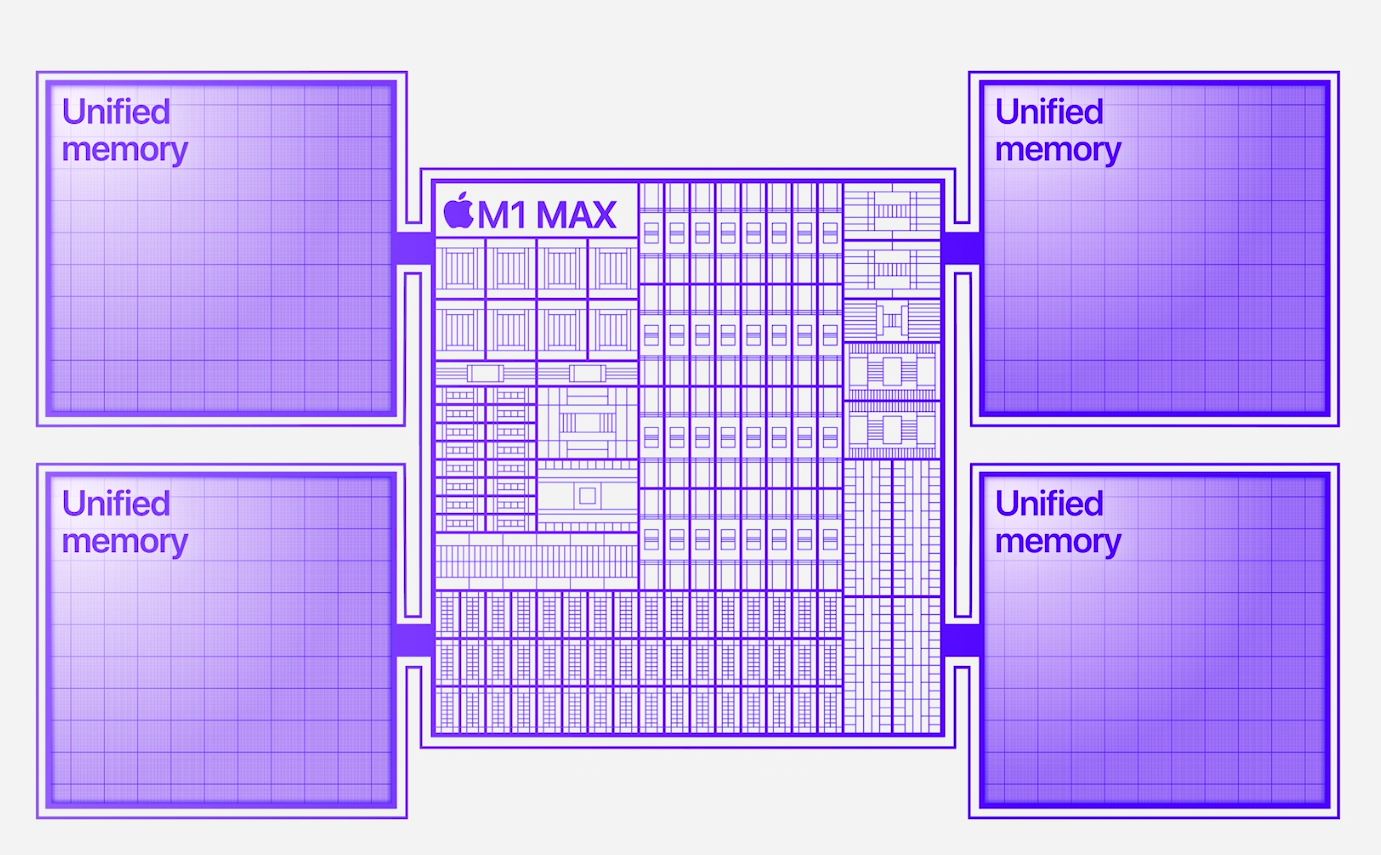
The 10-core CPU remains, but Apple has a 32 core GPU here. Something that Apple did not mention in the keynote, but one can see on the configurator is that there is a 24-core GPU option as well.
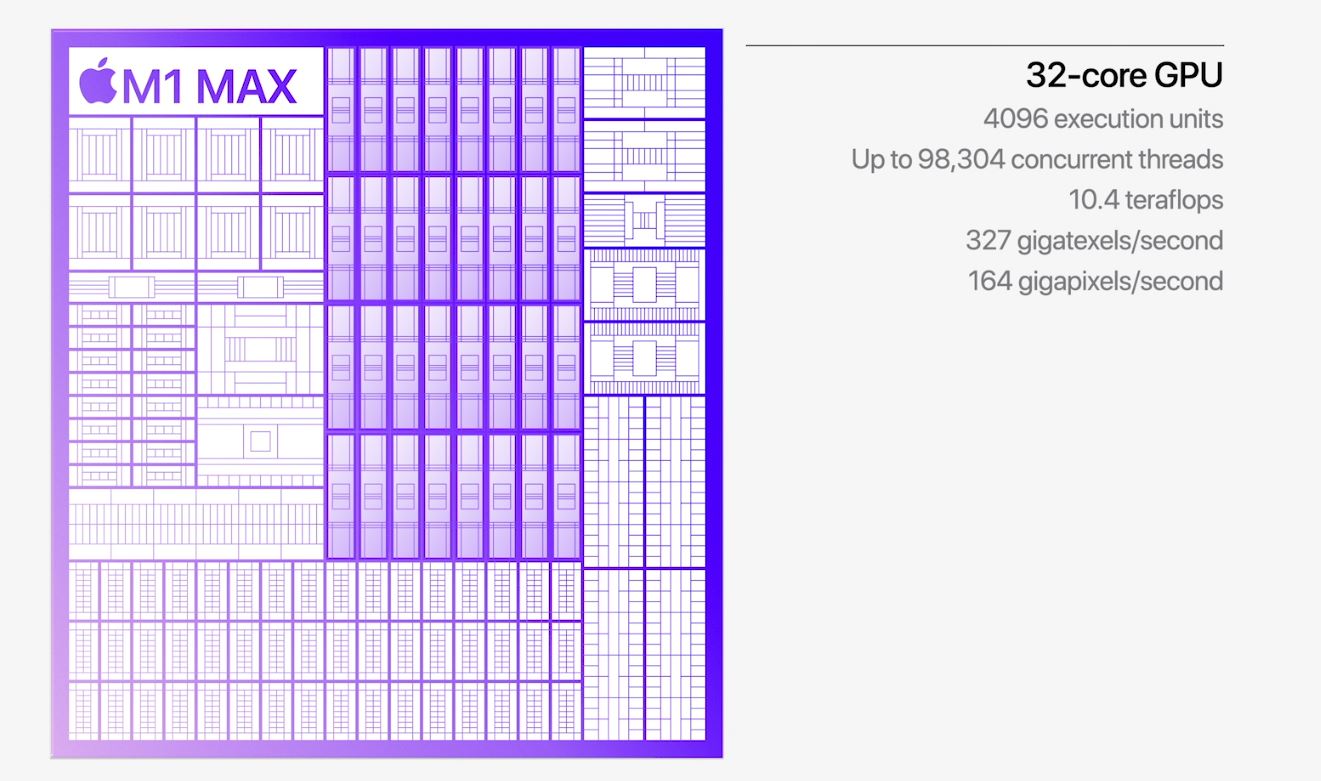
Apple also doubles many of the Media Engine facilities but based on its diagram, likely not all of them.
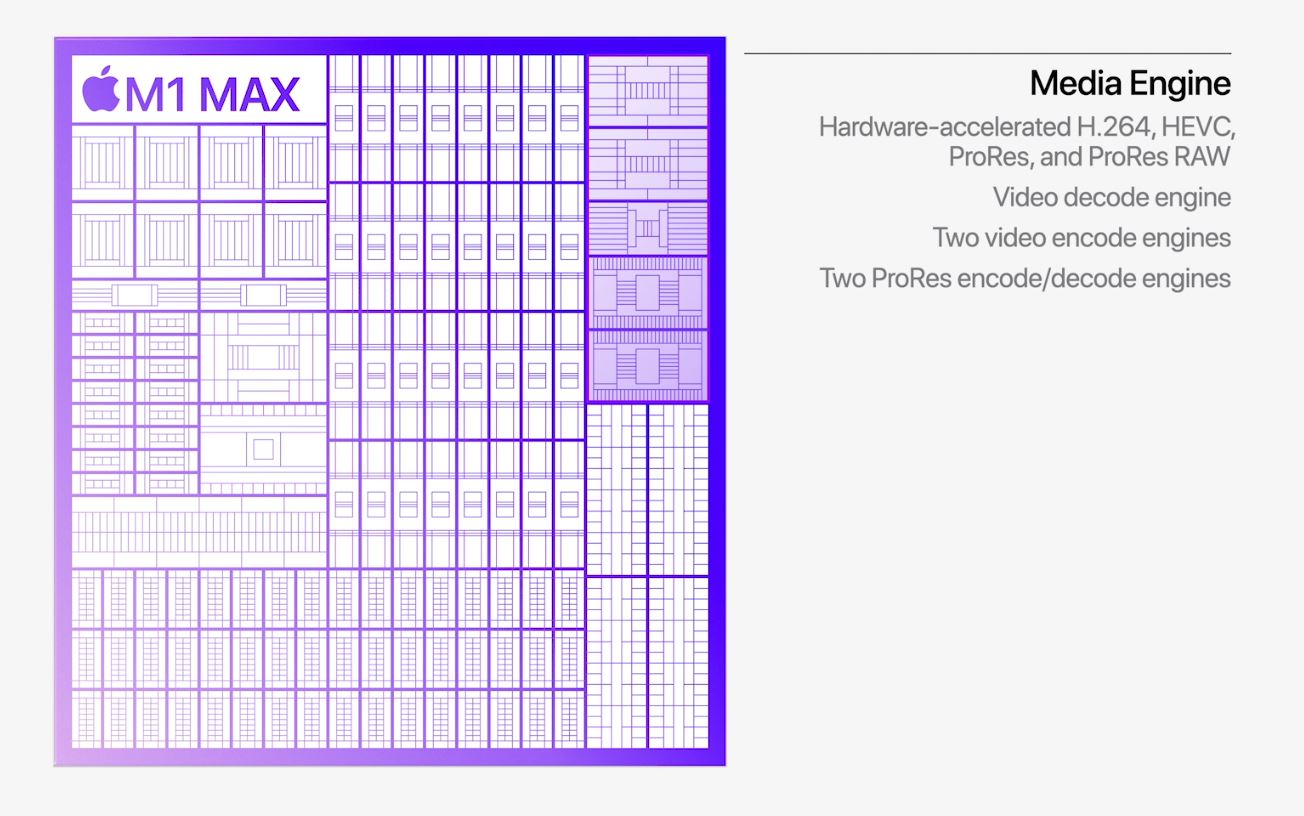
Perhaps the interesting bit here is exactly what Apple saw fit to scale and what it did not. On the CPU core side, it did not see a need to scale, nor on its AI inference hardware. The memory bandwidth, capacity, GPU cores, and media engines did see the need to scale. What Apple seems to be stating, and there is logic behind this, is that its 10-core CPU is enough. Instead of investing toward a larger CPU, the focus was on pushing higher-end GPU capabilities and media codecs.
In terms of power consumption, the M1 Pro and M1 Max use a lot more power than the M1, but also offer more performance than Intel counterparts.
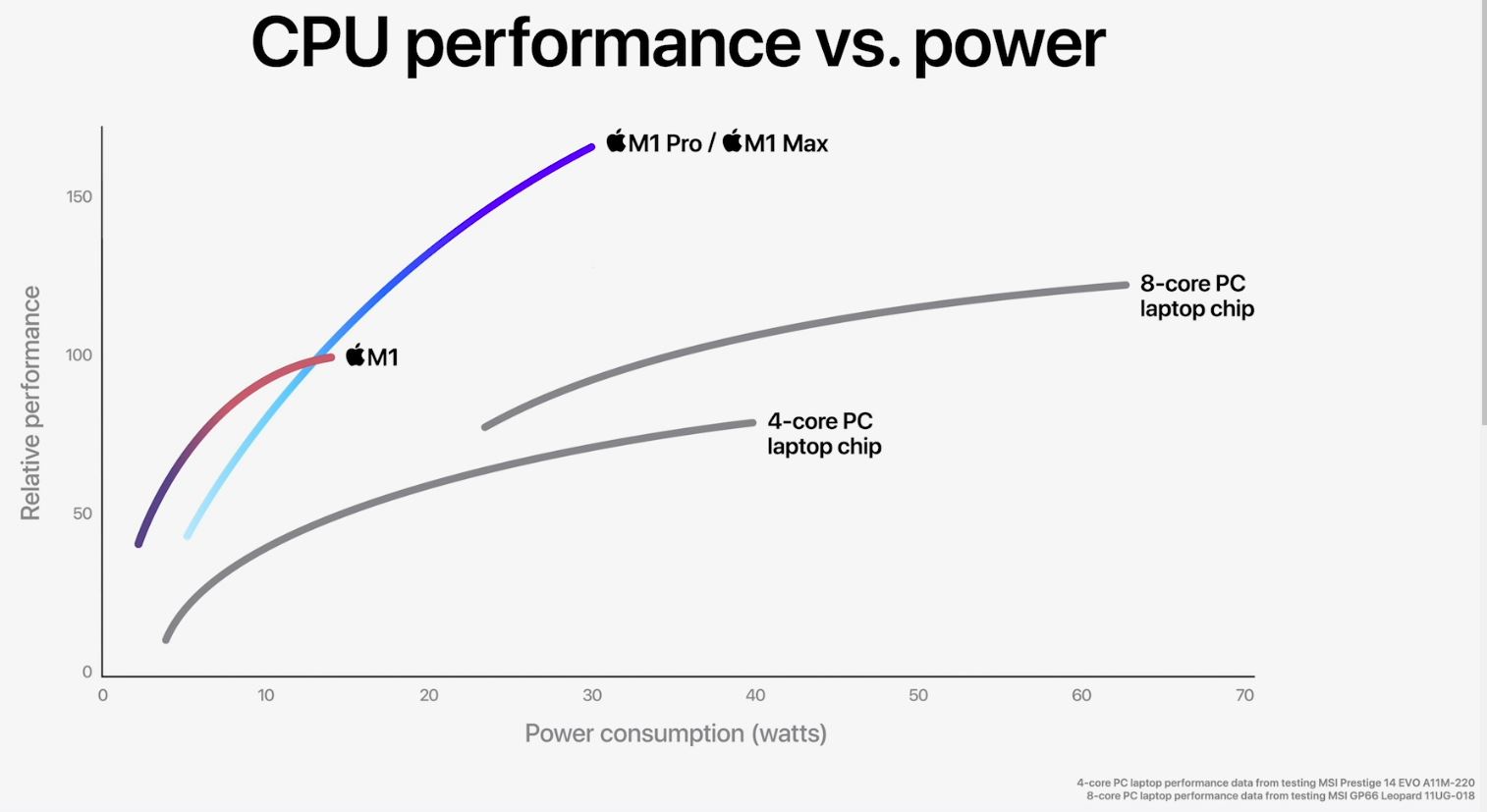
Apple also says it offers similar GPU performance but at a lower power than a PC. We should just note here that the MSI GE76 Raider it is comparing to here has an Intel Core i9-11980HK 2.6GHz, 32GB of DDR4-3200, and a NVIDIA RTX 3080 with 16GB. We should also note that it has a 1920×1080 screen. That screen is a 360Hz gaming panel instead of a 120Hz panel so that is a big potential difference as well.
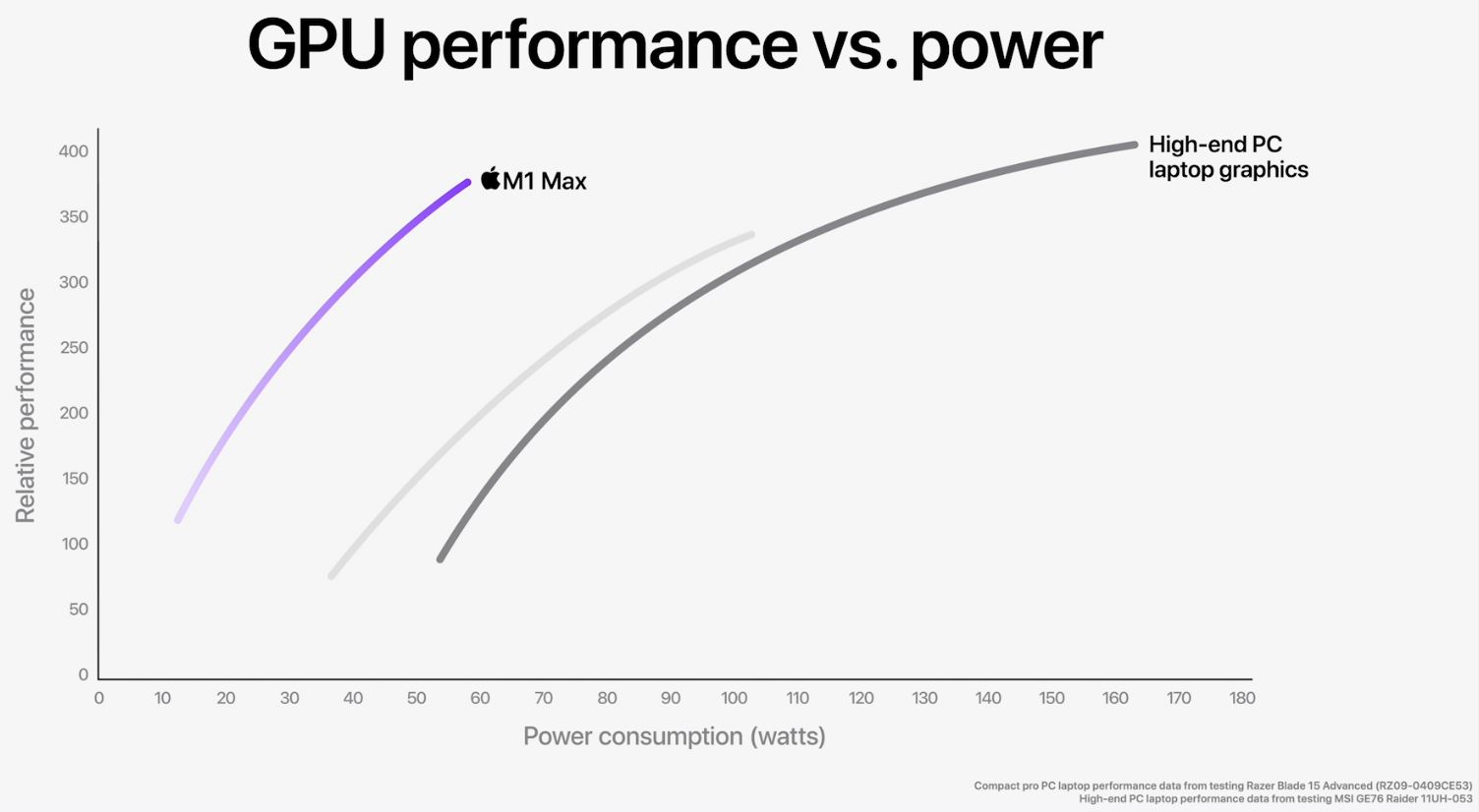
Still, this is a big deal in terms of Arm notebooks in the market.
Final Words
For those who are not aware, I switched from a Dell XPS 13 to a 16GB Apple MacBook Pro 13″ M1 and have been using it this year. Although travel has not been as much as pre-pandemic, I still hit United 1K again in July. Through that travel, I can say that the M1 overall has performed well. It has been sluggish at times. I am not a fan of MacOS nor the “Pecking Bar“.
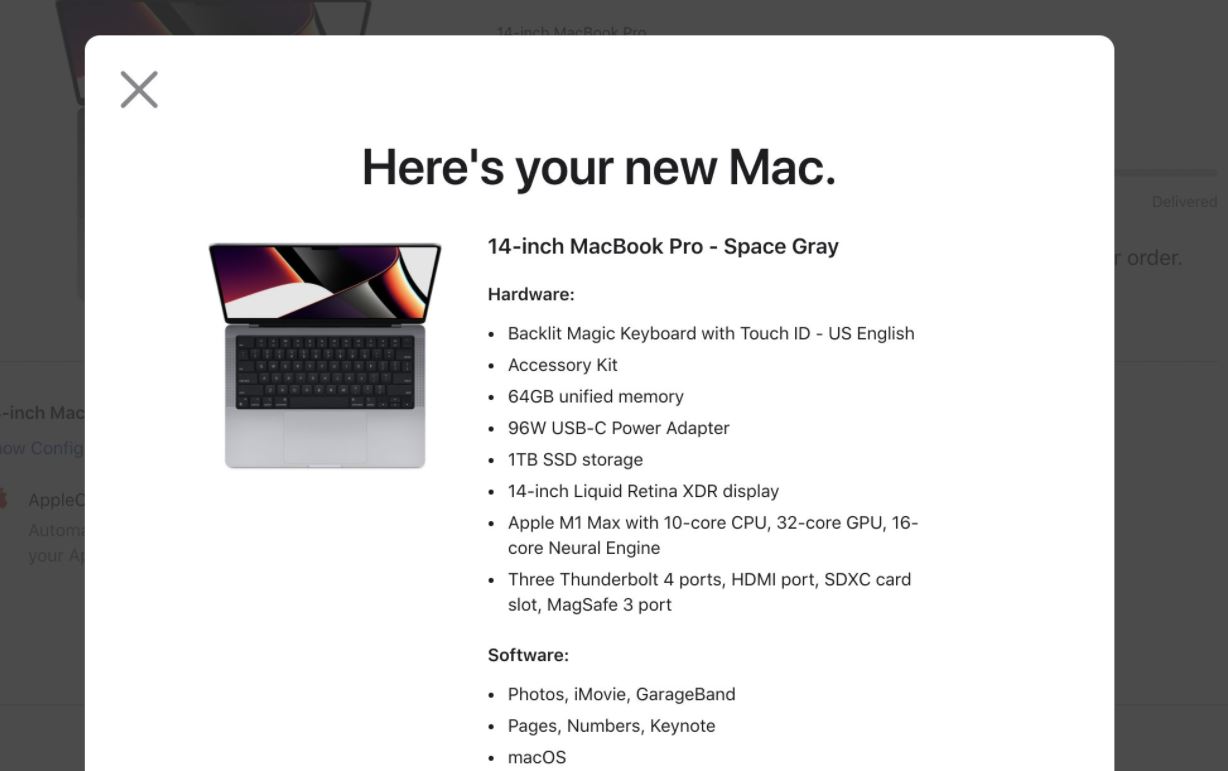
Some of the major annoyances of the system were that once it got outside of its comfort zone (e.g. rendering video in Premiere Pro even Apple Silicon versions), the fans spun up and the unit absolutely screamed. Aside from that having only two USB Type-C/ Thunderbolt ports was not normally a challenge, but it became one when it was my primary workstation during the move to Austin, TX this summer. I ordered the M1 Max 14″ MacBook Pro to see how it fares. Battery life is awesome on the 13″ but I was clearly running out of performance almost daily.
What is important with this release is not just the silicon, it is the broader story. Unified memory architectures are coming, and important. Further, the concept that chips need to span high-performance general-purpose computing versus having accelerators for key tasks is a tension in the industry that is set to change beyond just on the client side.
Now, we can just hope Apple updates the 10GbE Mac Mini, especially since Ubuntu 21.10 Impish Indri offers some Apple silicon support.

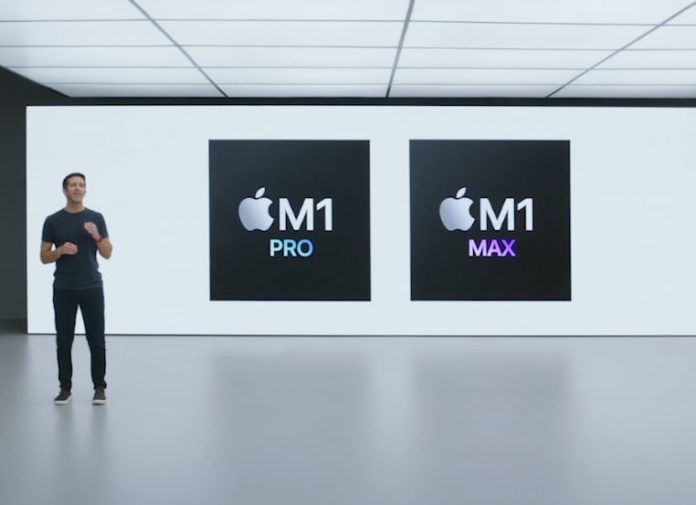
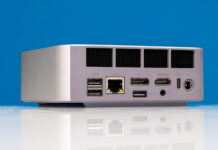

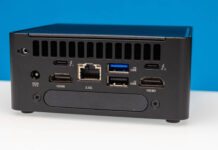
and why the hell is there an m1 pro with 8cores (not 10!) to choose in the store, where you goota pay more for the one mentioned on the show? where all the charts for 8-core one? why its not even mentioned here? awww, apple.
My Dell XPS 13 and my co-workers Yoga gets roasting hot with fast running fans just running too many Google Chrome Tabs.. Not sure it is a mark against any laptop that it gets hot and the fans spin up when doing video rendering. Good article overall, but its an odd segway into those comments.
Apple no longer sell a x86 laptop, only some of the iMac line and the 2018 mini. I hear rosetta works well for general cases, but not a replacement for scientific/technical work which also has to run on Xeons using the Intel Math Kernel (MKL) libraries…
Pecking Bar – brilliant name. Thanks for the giggle, Patrick!
Too bad it’s just yet another piece of apple landfill volunteer garbage huh
So, now we are switching from “CPU from Intel / AMD + Memory from others” assembled by Laptop manufacturer to “CPU + Memory from Intel / AMD”. One less component in the system should improve things in general for everyone.
>”The GPU Apple says is a 16-core unit with up to 5.2 TFLOPS of performance, but Apple did not say at what precision on the slide.”
FP32 performance. We can tell because the M1 has an 8-core GPU with 2.5 TFLOPS of FP32. The M1 Pro has twice the GPU cores, so 5.2 TFLOPS of FP32 makes total sense.
At least Patrick gets the transition from general purpose CPUs to accelerators. It’s crazy reading stories and seeing people equate this to what has been done for years in the industry. I work in this space on future products and Patrick’s got it right.
@Y0s also virtualization is out of the window.
I currently am using a Mac at work, but at the next upgrade that will probably become an Linux machine (Ubuntu Desktop). My private mini (2018) will run until it dies, but I might pick up an air for travel down the line, but not now.
I’m wondering about the security issues (Spectre and the like) in these CPUs. It’s going to be interesting to see if issues will come up over time as they sometimes do with Intel/AMD cpus.